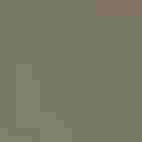Bridled Titmouse
At a Glance
An active little crested bird of southwestern woodlands. In lower canyons of the Arizona mountains, the Bridled Titmouse is often one of the most common birds at all seasons, with small flocks moving about and chattering in the oaks as they search the branches for insects. The callnotes and behavior of this species (and even its head markings) may suggest a chickadee more than the other titmice.
All bird guide text and rangemaps adapted from Lives of North American Birds by Kenn Kaufman© 1996, used by permission of Houghton Mifflin Harcourt Publishing Company. All rights reserved.
Category
Chickadees and Titmice, Perching Birds
IUCN Status
Least Concern
Habitat
Arroyos and Canyons, Forests and Woodlands, Shrublands, Savannas, and Thickets
Region
Southwest
Behavior
Direct Flight, Flitter, Rapid Wingbeats
Population
160.000
Range & Identification
Migration & Range Maps
Mostly a permanent resident. Small flocks regularly move to lower elevations in winter, and occasionally appear in streamside groves far from mountains.
Description
4 1/2 -5" (11-13 cm). Black and white "bridle" pattern on face, gray and black crest. Sometimes confused with Mountain Chickadee.
Size
About the size of a Sparrow
Color
Black, Gray, Tan, White
Wing Shape
Rounded
Tail Shape
Rounded, Square-tipped
Songs and Calls
Vocalizations are similar to calls of other chickadees and titmice, but more rapid and on a somewhat higher pitch. The song is a 2-syllable phrase, repeated several times. One of its common calls is a variant of the familiar chick-a-dee.
Call Pattern
Falling, Flat, Undulating
Call Type
Buzz, Chirp/Chip, Rattle
Habitat
Oak and sycamore canyons, pine-oak woods. Breeds mostly in areas with many live oaks, often in pine-oak woodland. In some areas, will breed in streamside groves of cottonwoods and willows at middle elevations. In winter, small numbers are regularly found in such cottonwood-willow groves.
Sign up for Audubon's newsletter to learn more about birds like the Bridled Titmouse
Behavior
Eggs
5-7. Unmarked white. Details of incubation are not well known, but probably mostly or entirely by female.
Young
Probably both parents bring food for young. Development of young and age at first flight not well known.
Feeding Behavior
Forages in various trees and bushes but especially in oaks, hopping actively among branches and twigs, pecking at bases of leaves, often hanging upside down. Will feed on the ground briefly as well. Will come to bird feeders for seeds or peanut-butter mixtures; opens seeds by holding them with feet and pounding with bill.
Diet
Mostly insects, some seeds. Diet is poorly known. Apparently feeds mostly on insects, including caterpillars, beetles, probably many others, including insect eggs and pupae. Also eats various seeds.
Nesting
Nesting behavior is poorly known. Pairs may remain together at all seasons, establishing nesting territory after flocks break up in late winter. In Arizona and adjacent New Mexico, nesting activity is mostly from April to June. Nest site is in hole in tree, often in dead limb or stump; may be either natural cavity or old woodpecker hole. Nest height varies, 4-30' above ground. Will also use artificial nest boxes. Nest has extensive soft lining of grass, leaves, spiderwebs, lichens, plant down, catkins, animal hair, and other items.
Conservation
Conservation Status
Within its limited range in United States, very common, numbers apparently stable.
Climate Threats Facing the Bridled Titmouse
Choose a temperature scenario below to see which threats will affect this species as warming increases. The same climate change-driven threats that put birds at risk will affect other wildlife and people, too.




